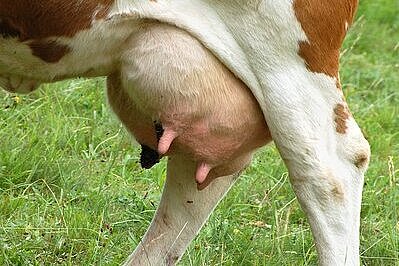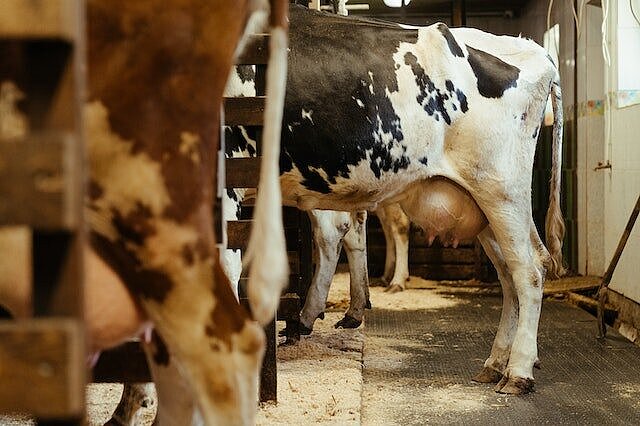Camelid

What is camel udder?
Camel udder is, as the name suggests, the udder tissue of camels. As with other mammals, the udder is used to produce milk for the rearing of offspring. Camel udder is used as a food source for humans in some cultures and is now finding its way into the diet of dogs as an exotic source of protein. It is rich in protein, vitamins and minerals, making it an interesting option for feeding dogs.
Benefits of camel udder for dogs
High protein content
Protein is essential for maintaining and building muscle mass in dogs. Camel udder provides a high quality protein source that can help meet the needs of active or working dogs.
Allergy friendly
For dogs that are allergic to more common protein sources such as beef, chicken or pork, camel udder can be an excellent alternative. Its exotic nature makes it less likely that dogs have already developed sensitivities.
Rich in nutrients
In addition to protein, camel udder also contains a number of important vitamins and minerals that can contribute to a dog's overall health, including iron, zinc and various B vitamins.
Disadvantages of camel udder for dogs
Availability and price
As an exotic ingredient, camel udder can be hard to find and more expensive than traditional protein sources. This can make it a less viable option for some dog owners.
Lack of long-term studies
Because camel udder is a relatively uncommon ingredient in dog diets, there is less research on its long-term effects on dog health. This means that potential risks or side effects may be less well understood.
Taste and acceptability
Not all dogs like the taste or texture of camel udder. It can be a challenge to figure out if it's acceptable to your dog, especially if they're picky eaters.
A niche product with potential
Camel udder is an interesting option in dog nutrition, especially for dogs with special dietary requirements or allergies to more common protein sources. The benefits, such as high protein content and nutrient density, make it a worthy choice for supplementing your dog's diet. However, the potential drawbacks such as availability, price and lack of long-term studies should not be overlooked.
If you notice any signs of hypersensitivity or poisoning in your dog, you should see your vet immediately. We are not a substitute for a vet, but we try to be as accurate as possible. Every dog reacts differently and we recommend you get a second opinion or consult your vet if in doubt.
Stay healthy and take good care of your four-legged friend!😊
Similar to Camelid
One of the biggest advantages of udder as dog food is that it is very cheap. As it is a slaughterhouse offal, it is often offered at a low price. Udder is also very tasty for dogs, who like to chew...
Bovine udder is the cow's fourth stomach, which is responsible for the digestion of plant-based food. It contains many beneficial bacteria and enzymes that enable the fermentation of food. Beef...
Sheep udder is part of the female reproductive system of sheep and belongs to the offal or viscera category. It is traditionally used in the human diet in various cultures around the world, but its...
Goat udder, a by-product of goat milk production, is the udder of a goat from which milk is obtained. After a goat is no longer producing milk, its udder can be used as a source of meat. Although...



